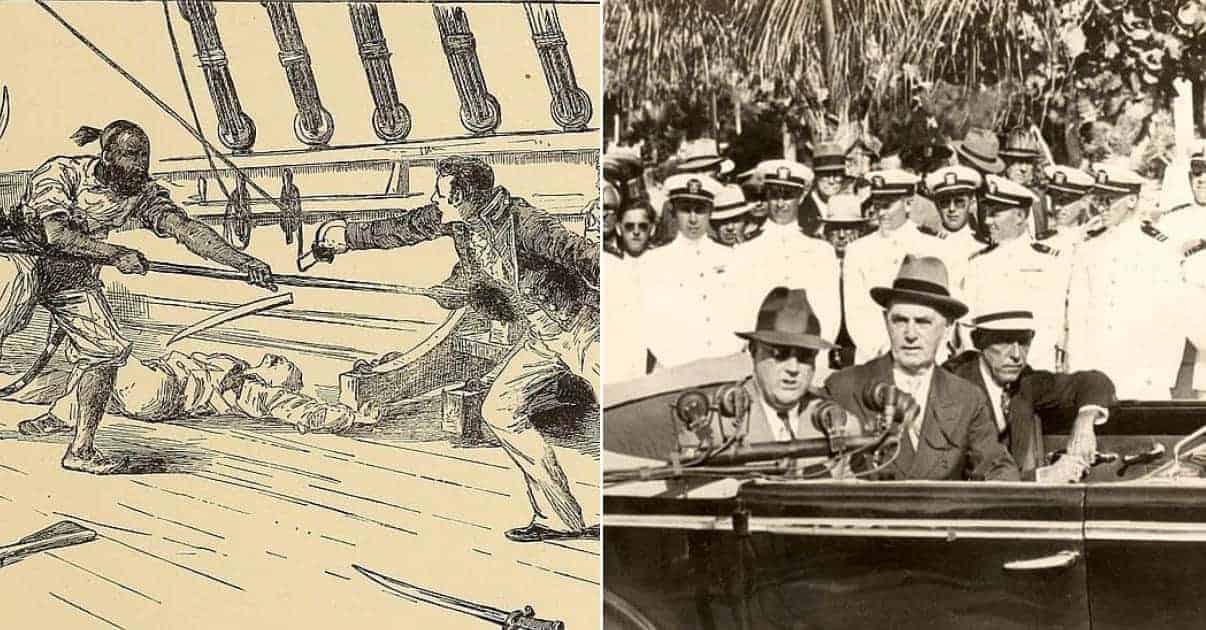The President of the United States has a fleet of transportation vehicles at his disposal. He lives in a residence provided by the people. The staff which operates and maintains the White House and cares for his family is enormous. So is the staff which runs his administration. He has a government-run and secure rest and recreation facility which has been called by different names in the Catoctin Mountains of Maryland, currently known as Camp David. The President and his family have around-the-clock security protection from the Secret Service, and additional layers of security from the military. All of these perquisites have caused many recent presidents to comment on their separation from the people.
It wasn’t always this way. Washington began the Presidency in a rented New York House, the only security being his personal staff. In Lincoln’s day, the public could and often did enter the White House by simply knocking on the door. When Franklin D. Roosevelt was President he frequently went on fishing trips aboard US Navy cruisers; several US warships received modifications to accommodate FDR’s wheelchair. He also had a specially built railcar, the Ferdinand Magellan, for his land-bound trips across the country.

Here are some presidential firsts which led to the current state of the modern Presidency.

The President’s Air Fleet
Teddy Roosevelt is often described as the first president to fly but it is important to note that when he rode in a Wright Flyer over a Missouri County Fair he was no longer in office. The first President to fly while in office was his distant cousin, Franklin D. Roosevelt. The US Navy modified an existing flying boat to include a sleeping compartment and luxury accommodations for up to four passengers and placed the aircraft at the President’s disposal, but there are no records of the President ever using the airplane. Roosevelt preferred to travel by rail or sea, using a private railcar, the presidential yacht USS Potomac, or US Naval warships.
In 1943 he needed to travel to Casablanca in French Morocco for a conference with Stalin, Churchill and DeGaulle. Because of the still serious threat of German U-Boats in the Atlantic, it was decided that he would fly to the conference, and he did so in a Pan American Airways flying boat named the Dixie Clipper, stopping en route twice to refuel. This was the first flight by a President of the United States. The Army Air Force didn’t like the idea of the President flying in a commercial aircraft and they liked the idea of the Navy being responsible for flying the Commander in Chief of the Armed Forces even less.
The Air Force proposed supplying a modified B-24 bomber for the President to use and even provided one, but the Secret Service refused to allow the President to use the aircraft because of its less-than-stellar safety record. The Air Force next offered a modified cargo airplane which they named the Sacred Cow. It included an elevator to accommodate the President’s wheelchair and other amenities for his use. Roosevelt flew in the Sacred Cow once, to Yalta in 1945. Truman used the aircraft early in his presidency but didn’t like it, and he had it replaced with a larger airplane, an Air Force C-118 Liftmaster which he named the Independence, after his hometown in Missouri.
Air Force One isn’t the name of an airplane but rather a call sign. It was introduced when President Eisenhower was on an Air Force plane which had a call sign which shared the number 8610 with an Eastern Air Lines flight, causing confusion when the two airplanes entered the same airspace in 1953. The Air Force designated any US Air Force airplane which was carrying the President henceforth would be given the call sign Air Force One. Thus Eisenhower was the first President to fly on Air Force One. When the US Marines began the practice of flying the President by helicopter the flights were designated Marine One.
Presidents have a wide variety of aircraft at their disposal, besides the 747s which have become known by the public as Air Force One. Smaller Air Force aircraft have been used when the President’s itinerary requires the use of smaller ground facilities. Among these are Gulfstream III executive jets and Boeing C-32’s modified for executive travel and operated by the Air Force. The Navy maintains similar aircraft for the use of senior staff and civilian officials, and for the President’s use if he so chooses, but the last time the call sign Navy One was used, indicating the President was onboard the aircraft, was when George W. Bush was flown to the USS Abraham Lincoln in 2003.

